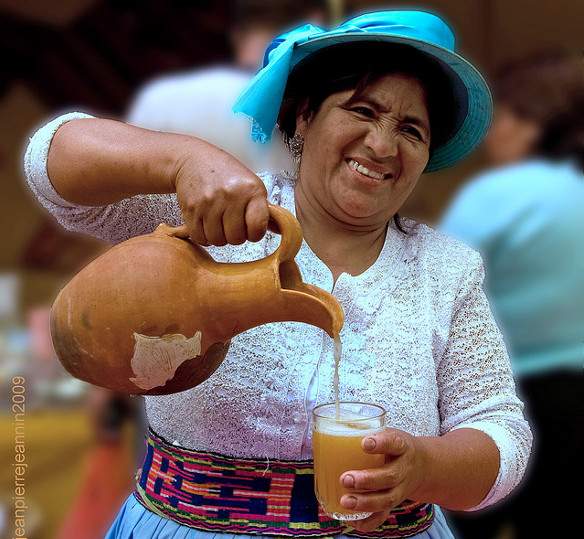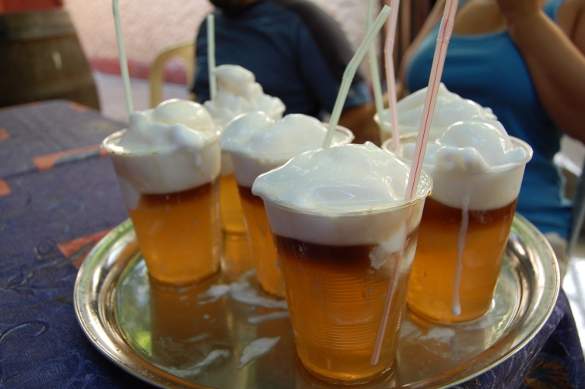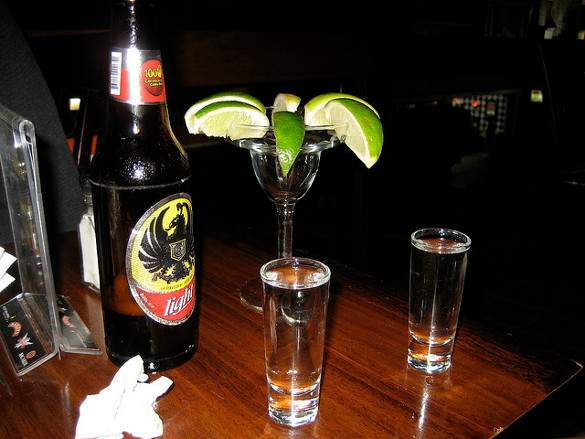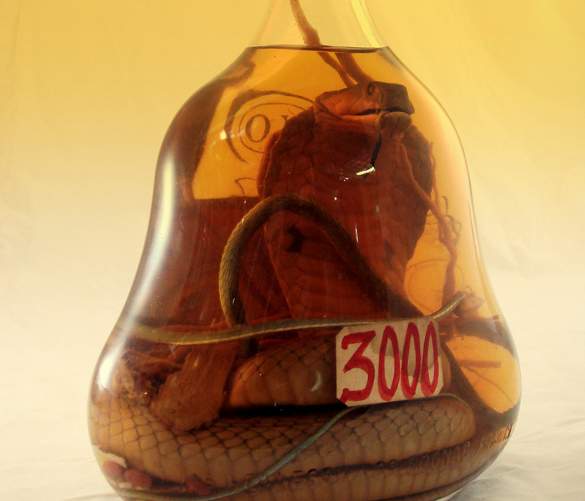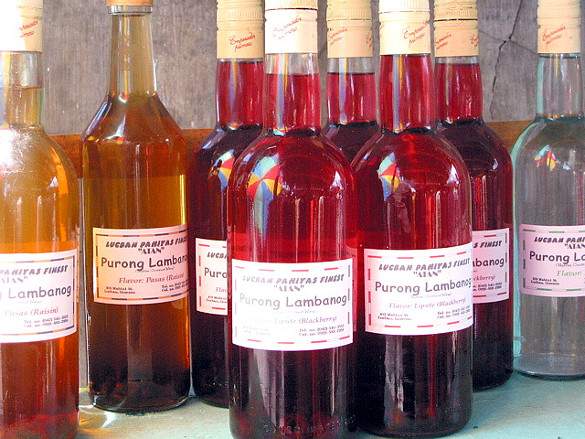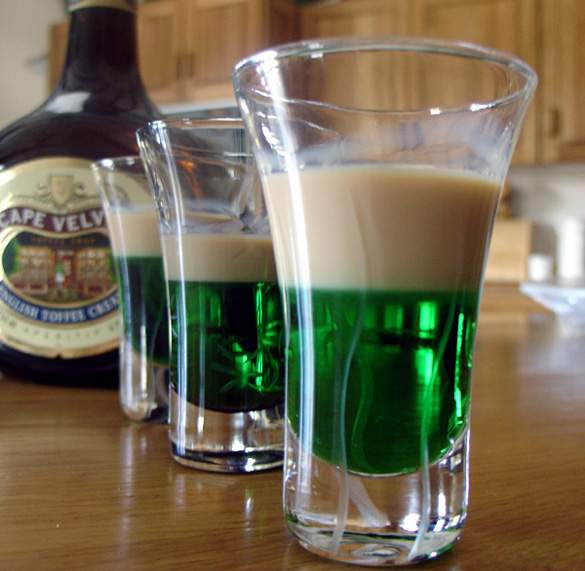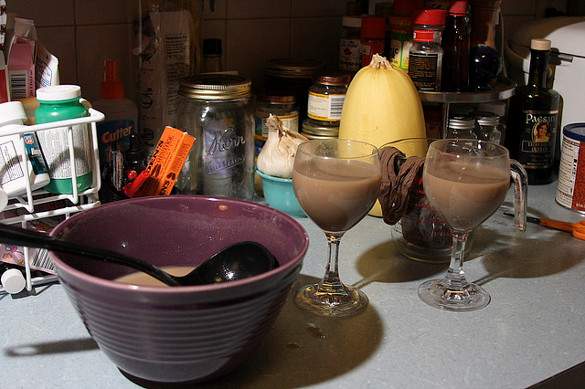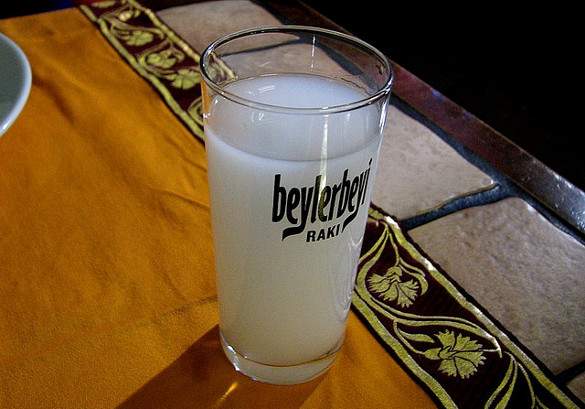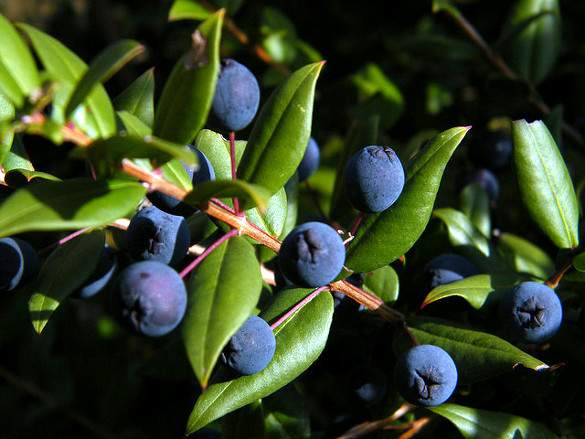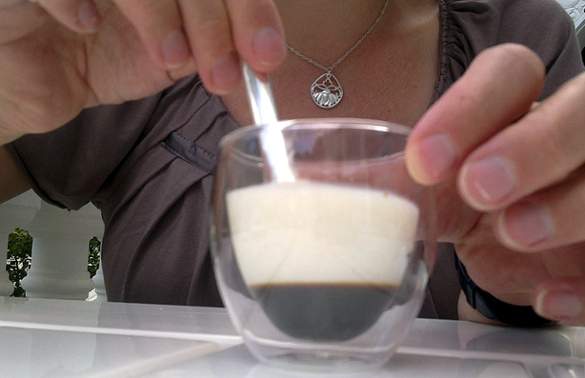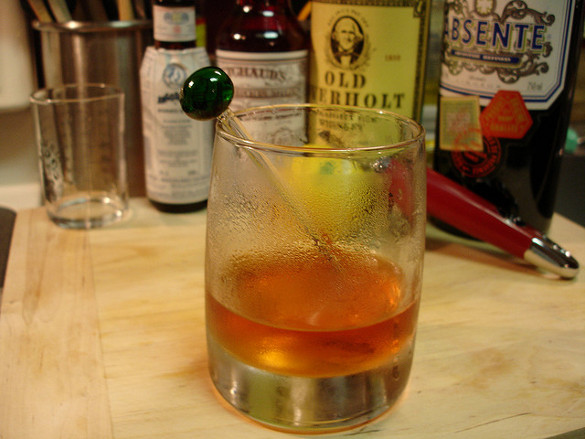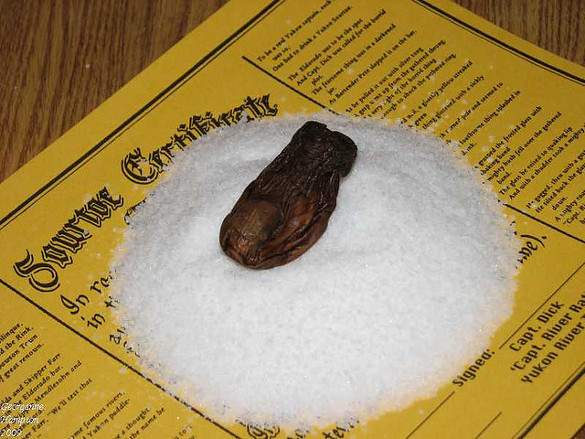A big part of travel for me revolves around food and drink. While I do love to explore a new city, taking in whatever famous sites and experiences it is known for, nothing gets me more excited about a new destination than if it has some interesting new drink to try. It’s something I seek out, and it’s amazing how each region, country, city, or small town has some type of drink that is part of the fabric of that society.
As someone who prides himself in trying anything I can get my hands on, I’m always impressed at the ingenuity that comes up in various drinks around the world. Combinations that I could never think of, liquors that I’ve never heard of, and the addition of ingredients that simply don’t seem like they belong (pineapple ice cream, anyone?) constantly remind me of how different we all are. But there’s always one thing that can bring the differences of people together, and that’s a unique alcoholic drink.
In no particular order, here are 20 unique drinks from around the world that you may want to add to your list of things to try:
Chicha – Peru
- How it’s made – In some countries where chicha is popular, maize (corn) is fermented in large vessels. In Peru, the traditional way to make chicha is to ground purple maize and chew on it, moistening it with saliva. There are natural enzymes in human saliva that convert the starch to sugar so it can ferment. The drink is then made from the fermented corn combined with other ingredients. The drink is cloudy, somewhat sour, and seems a bit carbonated. The longer it ferments, the stronger it is, and traditionally chicha should be made by women so as to not offend the mountain gods and corn goddess.
- Where you can get it – You can get chicha all over Peru, but most is not prepared in the traditional way by chewing the corn. If you want it made the traditional way, you may come across it in more rural areas or while on a trek. We sampled chicha in a village in the bottom of Colca Canyon.
- Why it’s popular – The Incas used chicha for rituals and during religious festival, and because Incan culture is still very important in many areas of Peru, the drink lives on.
Pisco Sour – Peru
- How it’s made – A pisco sour is made with pisco (a spirit popular in South America), lime juice, simple syrup, bitters, and an egg white.
- Where you can get it – You can find pisco sours throughout much of South America. The origin is contested, as both Peru and Chile lay claim to the pisco sour.
- Why it’s popular – Simply put, it’s delicious. The flavor and strength of the pisco, the sweetness of the simple syrup, the citrus from the limes, and the frothiness from the egg white all combine to make a wonderful concoction of goodness.
If Peru is on your travel wish list, read our Peru Travel Guide and check out the Peru Adventure Trips we offer.
Terremoto – Chile
- How it’s made – Terremoto’s are made with white wine, fernet (an Argentinian spirit), and pineapple ice cream.
- Where you can get it – We were told that the only place to get a real terremoto (spanish translation: earthquake) is at La Piojera in Santiago, Chile. It is a dive bar located near the Mercado Central.
- Why it’s popular – I don’t think there’s much that’s traditional about this drink, but despite the odd ingredients, it’s delicious and packs a punch. If you have more than one, you better take a cab back to your hostel or hotel.
Check out our Chile adventure trips and look at various hostels in Chile.
Guaro – Costa Rica
- How it’s made – Guaro is a liquor distilled from sugar cane and usually served as a shot with a slice of lime.
- Where you can get it – You can get guaro throughout Central America, but it’s quickly becoming the national drink in Costa Rica. The government actually nationalized the manufacture of guaro, and the only legal brand is Cacique Guaro.
- Why it’s popular – It’s cheap and versatile. While the traditional way of drinking it is to shoot it, guaro is also used in many mixed drinks.
If you’re going to Costa Rica, read about 7 Wet and Wild Ways to Experience Costa Rica and find out what to do if you only have 5 Days in Costa Rica.
Bia Hoi – Vietnam
- How it’s made – Bia hoi is the term given to beer brewed in Vietnam. It’s a very light home-brewed beer available all over the country. What makes it unique is that it’s different every place you get it, coming in small batches.
- Where you can get it – All over the country. Simply look for the hand-written cardboard signs that say Bia Hoi. It is usually served in hole in the wall, makeshift bars and small restaurants.
- Why it’s popular – Because of the ridiculously low cost. You can find bia hoi for the equivalent of a quarter throughout the country. Finding a tiny, open-air bar and sampling some bia hoi after walking around in the heat of Vietnam is the perfect break to your day.
Check out our Vietnam Travel Guide and find out How to Have Custom Clothes Made in Hoi An, Vietnam.
Snake Blood and Rice Wine- Southeast Asia/China
- How it’s made – You make it just how it sounds, by infusing whole snakes in rice wine or grain alcohol. If you want to take it a step further, you can mix fluids of the snake – blood and bile – with the rice wine and consume immediately as a shot.
- Where you can get it – Like bia hoi, snake blood and rice wine can be found throughout Vietnam, most of Southeast Asia, and China. It’s not hard to miss, as you’ll typically see large jars filled with a liquid of some sort with snakes in it.
- Why it’s popular – The craziness of drinking snake blood is what draws tourists to try it out, but it has traditionally been drunk because the snake has long been considered a healthy animal to consume and has been used in Chinese medicine for thousands of years.
Read about the Many Weird Fruits of Southeast Asia and How to Pretend You’re Rich in Bangkok.
Raicilla – Mexico
- How it’s made – Raicilla is like a moonshine, a distilled spirit that has some similarities to tequila as it is also made from the agave plant.
- Where you can get it – It originated in the southwest of Jalisco, a state in Mexico, but you can find raicilla all around Mexico, particularly in and around the popular city of Puerto Vallarta.
- Why it’s popular – Any type of moonshine is going to come with a certain appeal, and raicilla is no different. It’s a great local liquor to try that is unique and actually pretty tasty. It can pack a punch, though.
Read the Traveler Postcard – Jessica in Mazaltan and Why Mexico Should Be the Next Country You Visit.
Mama Juana – Dominican Republic
- How it’s made – Mama Juana is made by combining rum, red wine, and honey with tree bark and herbs and allowing them to marry in a bottle. Mama Juana has been compared to port wine and is typically served as a shot.
- Where you can get it – Mama Juana is a drink made in the Dominican Republic, and you can find it all over the island.
- Why it’s popular – Mama Juana has been consumed for medicinal purposes, but it’s also said to be an aphrodisiac. Either is reason enough for me to give it a try.
Check out our Dominican Republic Travel Guide and find cheap airfare to the Dominican Republic.
The Painkiller – Caribbean
- How it’s made – Painkillers are typically made with premium dark rum, cream of coconut, pineapple and orange juice, and topped with grenadian nutmeg.
- Where you can get it – The painkiller is popular in the Caribbean, especially the Virgin Islands. Many bars in both the US and British Virgin Islands serve their version of a painkiller. The Soggy Dollar Bar in Jost Van Dyke, an island near Tortola and St. Thomas, claim to be the creators of the famous drink.
- Why it’s popular – When you think of lounging on a tropical island, what do you envision? Chances are rum, coconut, and fresh fruit juices come to mind, so you might as well combine them all into one drink.
Find out Which Virgin Island is Right for You and find out why the British Virgin Islands are a Paradise Waiting to be Discovered.
Lambanog – Philippines
- How it’s made – Lambanog is a spirit that is made from the sap of unopened coconut flowers. The sap is distilled, making a coconut wine or vodka. The alcohol content is said to approach 45%.
- Where you can get it – Lambanog can be found all over the Philippines, but it is produced in distilleries in the Quezon province of Luzon. There are similar spirits made from the sap of unopened coconut flowers throughout the South Pacific and Southeast Asia. They are called by different names, but they are all very similar.
- Why it’s popular – Drinking lambanog was originally done as a communal activity, but now it’s marketed like any other popular drink is. The fact that it can be super cheap and extremely strong doesn’t hurt its popularity.
Read about what to do if you only have 24 Hours in Puerto Princesa, Palawan, Philippines and check out our Philippines Travel Guide.
Hirezake – Japan
- How it’s made – I’ve seen this described as both a dish you can eat and a shot you can drink. It’s made by taking the extremely poisonous puffer fish/fugu/blowfish fin, crisping it, and placing it in hot sake.
- Where you can get it – The fugu fish is served throughout Japan, but it’s regulated because of the toxicity of the fish and the to protect it from depletion. I’ve also seen this drink served in sushi restaurants in the US.
- Why it’s popular – Who doesn’t want to say they tried something that can legitimately kill them? That’s a pretty bad-ass story to tell.
Discover an Unexpected Side of Japan in Okinawa and find out 11 Ways to Save Big on a Trip to Japan.
Springbok – South Africa
- How it’s made – A springbok is typically served as a shot. Simply pour 1 measure of creme de menthe in a shot glass. Slowly add one measure of of amarula cream on top of that. They should stay separated, but if not, use the back of a spoon when pouring the cream to make sure they don’t mix.
- Where you can get it – The springbok is popular in South Africa, where you can also find an animal of the same name (and where the drink gets its name from). There is even a drinking game with the springbok.
- Why it’s popular – The springbok is said to be the national shot of South Africa (I didn’t realize nations had designated shots, but who am I to argue?). If you find yourself in South Africa and about to imbibe in a springbok, you may be asked to take part in a little drinking game. It involves placing both hands behind your back, stomping your feet, snorting through your nostrils, squealing, then doing the shot without using your hands.
Read about Going on Safari in Kruger National Park and find out about 8 Excellent Experiences in South Africa.
Kava – Vanuatu/Fiji
- How it’s made – The traditional way to prepare kava is to chew the roots of the kava plant, combine it with water, and consume. It is said to produce a very relaxing feeling, almost like a sedative.
- Where you can get it – Kava is best known in the Pacific Island nations of Vanuatu and Fiji, but you can find kava throughout the South Pacific, in Polynesia, Melanesia, Micronesia, and even Hawaii.
- Why it’s popular – Kava has been used for generations throughout the South Pacific for medicinal, religious, and cultural purposes. It’s often used in social situations like many other drinks.
Explore both the Vanuatu Travel Guide and the Fiji Travel Guide.
Raki – Turkey
- How it’s made – Raki is an unsweetened liqueur that has a strong anise flavor. It’s from the skin, pulp, seeds, and skin of grapes – what remained of the grape after it was used to make wine. It’s typically served early in the meal with appetizers. It is traditionally served either straight with some water on the side or diluted with chilled water, depending on your preference. When combining raki with water, it turns milky white.
- Where you can get it – Raki is known as the national drink of Turkey, though you can also find it in Greece, Serbia, and other Balkan countries.
- Why it’s popular – It was originally established as an alternative to absinthe, and if a drink is compared to absinthe, why would it not be popular?
Find out how to Eat Your Way Around Istanbul and read about Ten Experiences Not to Miss in Turkey.
Grappa – Italy
- How it’s made – Grappa is similar to raki in Turkey, as it’s made by distilling the leftovers of the grape after pressing it to make wine. What results is a grape based type of brandy, whose taste and strength varies based on the maker. Grappa is usually served as an after dinner drink. It can be added to coffee or espresso.
- Where you can get it – In order to get true grappa, it must be produced in Italy, San Morino, or the Italian part of Switzerland. It must also be produced from pomace, with the fermentation process occurring on the pomace with no additional water.
- Why it’s popular – Grappa has been around Italy for hundreds of years, since the Middle Ages. It was originally made so as to not waste any part of the grape. It was popular among the poor people of Italy, and the strength was enough to get them through the winter. Grappa is popular with all classes of people now, and it is said to aid in the digestion process after a meal.
Mirto – Sardinia
- How it’s made – Mirto is described as a blueberry liqueur, and it is made from myrtle berries and either honey or syrup. Myrtle is made from the berries of Myrtus Communis plant, which is native to the Mediterranean.
- Where you can get it – Sardinia is your best bet for obtaining an authentic bottle of mirto.
- Why it’s popular – Similar to grappa, the other Italian liqueur on this list, mirto is served as an after dinner drink to help aid in the digestive process. It is considered an important part of Sardinian tradition and has even been known to have some healing powers.
Find out 8 Reasons to Explore Sardinia’s Secrets and check out these 24 Resources You’ll Want When Planning a Trip to Italy.
Coffee Punch – Denmark
- How it’s made – First, you take a cup and put a coin in it. You then pour coffee in the cup until you cannot see the coin anymore. Finally, add schnapps until the coin is visible again. In Danish it’s referred to as kaffepunch.
- Where you can get it – This is perhaps the most interesting drink that I came across. A Danish friend alterted me to this drink that is from a small island called Fano off the Esbjerg coast of Denmark.
- Why it’s popular – Kaffepunch is quite strong, and it is becoming an increasingly popular drink to ring in the New Year.
Check out our Denmark Travel Guide and search for hostels in Denmark.
Sazerac – New Orleans
- How it’s made – A sazerac is a variation of an old fashioned, with the main ingredient being rye whiskey. There is a traditional way of making a sazerac, so pay attention. Pack a rocks glass with ice. Take another rocks glass, moisten a sugar cube with water, then crush it. Then blend the sugar with rye whiskey and bitters before adding ice and stirring. Now you’re about half-way there. Toss out the ice from the first glass and pour in Herbsaint (an anise-flavored liquor), coating the inside of the glass before discarding the excess. Then strain the whiskey into the Herbsaint coated glass, twisting some lemon peel over it so the oil makes it way through the drink. You can rub the peel over the rim of the glass, but whatever you do, don’t put the twist in the drink. Its’ considered sacrilege.
- Where you can get it – While you can get a Sazerac in many places in the US now, it’s a traditional New Orleans drink.
- Why it’s popular – The sazerac has been popular in New Orleans since pre-Civil War times. If you plan on trying a new cocktail that a certain city is famous for, New Orleans should be the city you do it in.
Check out these Travel Tips for New Orleans and this Photo Tour of New Orleans. Find out why you should add New Orleans to your RTW trip itinerary.
Brennivin – Iceland
- How it’s made – Brennivin is a type of schnapps made from fermented potato mash. The fermented potatoes are mixed with carraway seeds to produce a potent liqueur.
- Where you can get it – Brennivin is considered to be Iceland’s signature liquor, though many locals don’t regularly drink it (it is associated with alcoholism).
- Why it’s popular – As the national drink of Iceland, it is also the traditional drink of a big mid-winter festival in Iceland. The nickname Black Death is pretty intriguing as well.
Read about 9 Incredible Things to Experience in Iceland and check out these 10 Reasons to Visit Iceland Now.
The Sourtoe Cocktail – Dawson, Canada
- How it’s made – I debated adding this one to the list, but the zaniness and nastiness of the whole thing just forced my hand. Here’s how it’s made: Choose a drink, any drink, and the bartender at this establishment will add one severed toe to your drink. Yes, that’s right, I said severed toe. A severed human toe will be added to your drink. They keep said toes stored in salt when they aren’t being used to garnish drinks. In order to gain acceptance into the Sourtoe Cocktail Club, you must drink your drink, and your lips must touch the toe.
- Where you can get it – You can only have the severed toe cocktail at the Downtown Hotel in Dawson, Canada, located just below the Arctic Circle.
- Why it’s popular – Um, because it has a severed toe in it.
Check out the Yukon Territory Travel Guide.
Food and drink are a major part of a destination. Different drinks are part of a country’s fabric, their culture, their celebrations, even their religion. Even though many of these drinks may seem odd to you and I, they are all worth trying at least once (well, maybe not the toe one).
Photo credits: 1, 3, 4, 5, 6, 7, 8, 9, 10, 11, 13, 14, 15, 16, 17, 18, 19, 20
